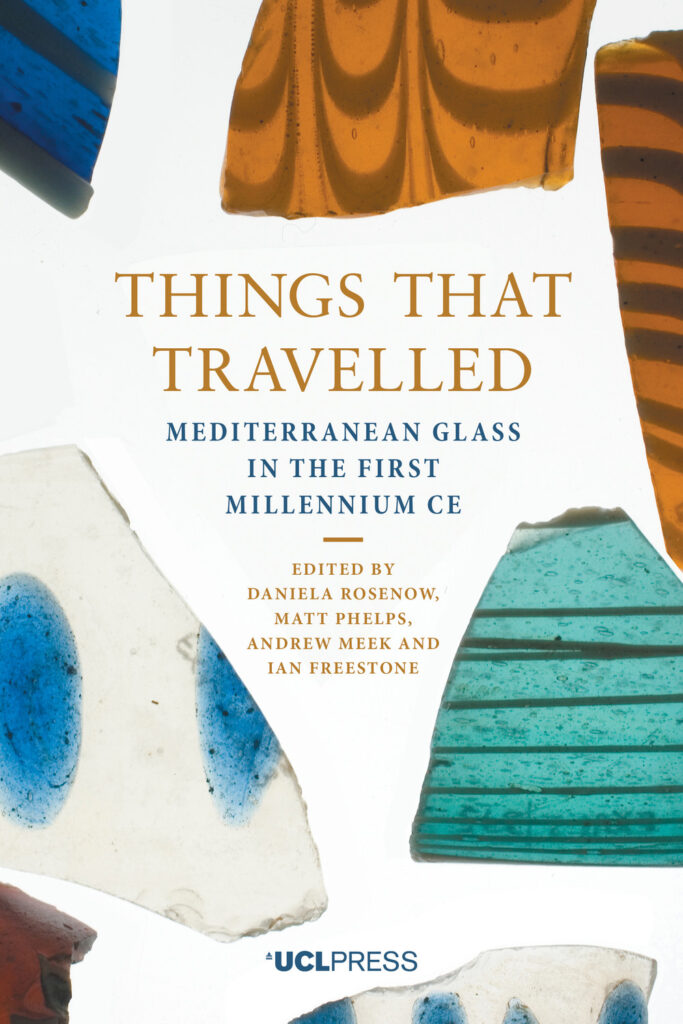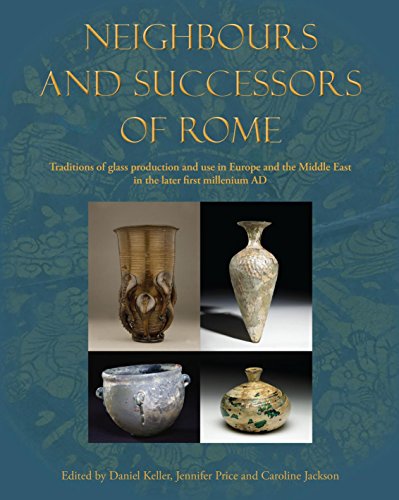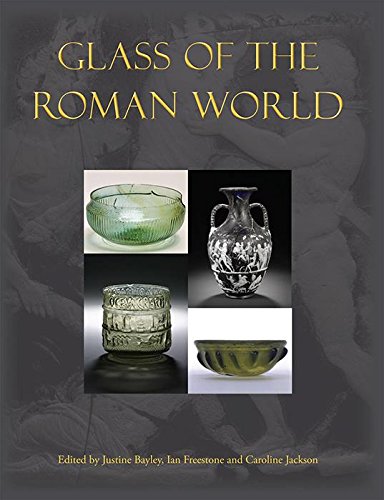
Things That Travelled: Mediterranean Glass in the First Millennium AD
Daniela Rosenow, Matt Phelps, Andrew Meek and Ian Freestone (Eds.)
Recent research has demonstrated that, in the Roman, Late Antique, Early Islamic and Medieval worlds, glass was traded over long distances, from the Eastern Mediterranean, mainly Egypt and Israel, to Northern Africa, the Western Mediterranean and Northern Europe. Things that Travelled, a collaboration between the UCL Early Glass Technology Research Network, the Association for the History of Glass and the British Museum, aims to build on this knowledge.
Covering all aspects of glass production, technology, distribution and trade in Roman, Byzantine and Early Medieval/Early Islamic times, including studies from Britain, Egypt, Cyprus, Italy and many others, the volume combines the strengths of the sciences and cultural studies to offer a new approach to research on ancient glass. By bringing together such a varied mix of contributors, specialising in a range of geographical areas and chronological time frames, this volume also offers a valuable contribution to broader discussions on glass within political, economic, cultural and historical arenas.
Available for Purchase and Free Download
ISBN: 9781787351172 | Published by: UCL Press | Year of Publication 2018 | Language: English 362p.

Neighbours and Successors of Rome: Traditions of Glass Production and use in Europe and the Middle East in the Later 1st Millennium AD
Daniel Keller, Jennifer Price and Caroline Jackson (Eds)
Presented through 20 case studies covering Europe and the Near East, Neighbours and Successors of Rome investigates development in the production of glass and the mechanisms of the wider glass economy as part of a wider material culture in Europe and the Near East around the later first millennium AD. Though highlighting and solidifying chronology, patterns of distribution, and typology, the primary aims of the collection are to present a new methodology that emphasises regional workshops, scientific data, and the wider trade culture.
This methodology embraces a shift in conceptual approach to the study of glass by explaining typological change through the existence of a thriving supra-national commercial network that responded to market demands and combines the results of a range of new scientific techniques into a framework that stresses co-dependence and similarities between the various sites considered. Such an approach, particularly within Byzantine and Early Islamic glass production, is a pioneering concept that contextualises individual sites within the wider region. By twinning a critique of archaeometric methods with the latest archaeological research, the contributors present a foundation for glass research, seen through the lens of consumption demands and geographical necessity, that analyses production centres and traditional typological knowledge. In so doing the they bridge an important divide by demonstrating the co-habitability of diverse approaches and disciplines, linking, for example, the production of Campanulate bowls from Gallaecia with the burgeoning international late antique style. Equally, the particular details of those pieces allow us to identify a regional style as well as local production. As such this compilation provides a highly valuable resource for archaeologists, anthropologists, and art historians.
Available for Purchase and on JSTOR
ISBN: 9781782973973 | Published by: Oxbow Books | Year of Publication: 2014 | Language: English 352p, H240 x W170 (mm) 81 colour illus, 95 b/w figs

Glass of the Roman World
Justine Bayley, Ian Freestone and Caroline Jackson (Eds)
Glass of the Roman World illustrates the arrival of new cultural systems, mechanisms of trade and an expanded economic base in the early 1st millennium AD which, in combination, allowed the further development of the existing glass industry. Glass became something which encompassed more than simply a novel and highly decorative material. Glass production grew and its consumption increased until it was assimilated into all levels of society, used for display and luxury items but equally for utilitarian containers, windows and even tools.
These 18 papers by renowned international scholars include studies of glass from Europe and the Near East. The authors write on a variety of topics where their work is at the forefront of new approaches to the subject. They both extend and consolidate aspects of our understanding of how glass was produced, traded and used throughout the Empire and the wider world drawing on chronology, typology, patterns of distribution, and other methodologies, including the incorporation of new scientific methods. Though focusing on a single material the papers are firmly based in its archaeological context in the wider economy of the Roman world, and consider glass as part of a complex material culture controlled by the expansion and contraction of the Empire. The volume is presented in honour of Jenny Price, a foremost scholar of Roman glass.
Available for Purchase and on JSTOR
ISBN: 9781782977742 | Published by: Oxbow Books | Year of Publication: 2015 | Language: English 272p, H280 x W216 (mm) b/w and colour illustrations
AIHV Publications
The AIHV publishes its congress proceedings in a series called Annales du Congres de l’Association Internationale pour l’Histoire du Verre. Details of their contents and how to purchase them can be found at the AIHV website.
